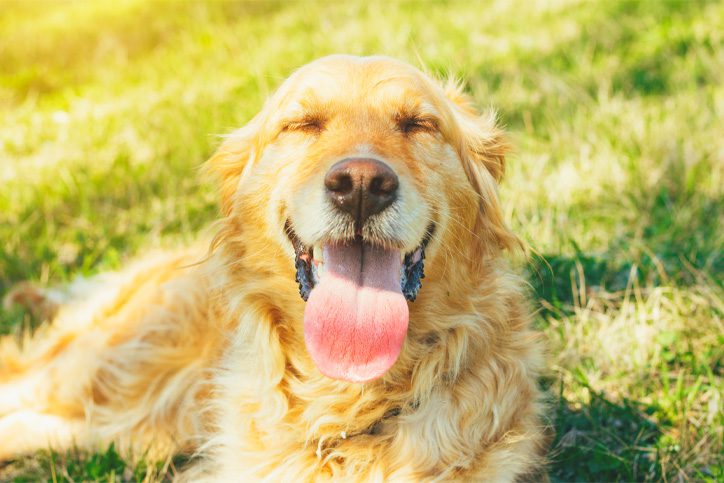Dog Overheating

Dog Overheating: How to Keep Your Canine Cool and Comfortable?
As temperatures ascent during the summer months, it is essential to take further measures to keep our furry friends safe and comfortable throughout. Dogs are vulnerable to overheating, which can point to heatstroke and other severe health difficulties. In this article, we will look at the warning signs of dog overheating, the potential dangers it poses, and most importantly, the precautionary measures and tactics you can implement to ensure your canine companion stays cool and relaxed.
Understanding Dog Overheating
Dogs adjust their body temperature differently from humans. While humans cool down mainly through perspiration, dogs expel heat through panting. Their limited sweat glands are located on their paws, which means panting is their main method of cooling off. However, when the outside temperature and humidity levels exaggerate, panting might not be sufficient to prevent overheating.
Common Causes of Dog Overheating
Several components contribute to dog overheating. One of the main reasons is exposure to extreme temperatures, especially when mixed with humidity. Leaving your dog in a hot car, insufficient shade, or shelter, and engaging in rigorous activities during peak heat hours are all factors that increase the risk of overheating. Certain dog breeds, such as Bulldogs and Pugs, are also more susceptible to overheating due to their brachycephalic (short-nosed) nature.
Recognizing the Signs of Dog Overheating
Dogs don’t have the amenity to sweating as humans do, making them more vulnerable to heat enervation and heat hyperpyrexia. Knowing the signs of overheating in your beloved companion is crucial. Some common indicators include bright red or pale gums, Lack of coordination, loss of consciousness, heavy panting, slavering, rapid heartbeat, lethargy, vertigo, and vomiting. If you notice any of these symptoms, it’s important to act right away to prevent further complications.
Measures for Keeping Your Canine Cool:
Provide Ample Shade and Fresh Water
One of the easiest yet crucial techniques to protect your dog from overheating is by providing shade and plenty of fresh water. Construct a shaded area in your yard using umbrellas, tarps, or trees. Make sure that your dog’s alfresco space has a cool, well-ventilated shelter where they can retreat from the sun’s fiery rays.
Limit Exercise on Hot Days
A routine workout is essential for your dog’s overall good health, it’s crucial to pay attention to the weather forecast. On searing days, choose shorter walks and less strenuous activities to prevent overheating.
Keep Fresh Water Available
Hydration is key to combating overheating. Ensure your dog has access to fresh, cool water always. Consider placing multiple water bowls in different areas of your home or backyard.
Limit Sun Exposure
Dogs with light-colored or short hair are particularly vulnerable to sunburn and overheating (hyperthermia). Apply pet-safe sunscreen to uncovered regions such as the nose, ears, and belly, especially if your dog enjoys consuming time in the sun. Select a sunscreen particularly formulated for dogs, as human sunscreens may contain toxic constituents for pets. You can also provide protective clothing, such as lightweight shirts or vests, to shield your dog’s skin from direct sunlight.
Indoor Enrichment Activities
When outdoor temperatures become too extreme, engaging your dog in indoor enrichment activities can keep them mentally stimulated while staying cool. Puzzle toys, treat-dispensing toys, and obedience training exercises can provide mental challenges and prevent boredom. You can also freeze dog-safe treats or toys in ice blocks for a refreshing and engaging experience.
Utilize Cooling Accessories
There are many devices available in the market to help keep your dog cool. Dog cooling mats, vests, and kerchiefs are designed to provide relief from heat. These products are often made with cooling gel or utilize evaporative technology to keep your canine comfortable.
Provide Proper Ventilation
Be certain that your dog’s living space has enough ventilation for proper airflow. If they are indoors, use fans or air conditioning to retain a cooler environment. If your dog spends time in a crate, make sure it is well-ventilated and not placed in direct sunlight.
Wet Towels and Misting
If your dog displays symptoms of overheating, you can wet a towel with cool water and gently apply it on their neck, armpits, and groin area. You can also use a spray bottle to drizzle your dog’s fur with cool water. These practices help to lower body temperature effectively.
Frozen Treats
Treat your furry friend to some refreshing frozen treats. Freeze dog-friendly fruits, such as watermelon or berries, and offer them as a tasty way to cool down. Just make sure to remove any seeds or pits before serving.
Never Leave Your Dog in a Hot Car
Leaving a dog unattended in a parked car, even for a short period, can be catastrophic. The temperature inside a car can increase quickly, even with the windows slightly open, leading to heatstroke and organ failure. Always bring your dog with you or leave them at home in a cool, well-ventilated environment.
Grooming and Coat Care
Regular grooming is essential to keep your dog’s coat in good condition. Brushing helps remove loose fur and improves air circulation around the skin. However, refrain from shaving your dog’s coat too short, as it provides protection against the sun’s rays and insulation against heat and cold.
Supervise Swimming Activities
If your dog adores swimming, make sure they are always watched in and around the water. Not all dogs are natural swimmers, so a life jacket can provide an extra layer of safety.
Check Pavement Temperature
Before taking your dog for a walk, touch the pavement with the back of your hand. If it feels too hot to keep your hand on it comfortably, it’s too hot for your dog’s paws as well. opt for cooler times of the day or find alternative walking surfaces.
Consult Your Veterinarian
Protecting your furry friend from overheating is a responsibility every dog owner should take seriously. By recognizing the signs of dog overheating and implementing preventive measures, you can ensure your canine companion stays cool and comfortable during hot weather. Remember, a little extra care goes a long way in safeguarding your dog’s well-being and enjoying a wonderful summer together.
If you have any concerns about your dog’s ability to handle the heat or if they show signs of heat exhaustion, it’s crucial to consult your veterinarian or take them to an emergency vet hospital. Bulverde Animal Hospital can provide specific advice based on your dog’s breed, age, and overall health. Contact us to book an appointment.
Recent Posts
About Us
At Bulverde Animal Hospital, our ultimate goals are excellent service to clients, personal growth, and the professional development of our staff. We are a small clinic creating a significant impact on pets' lives.
